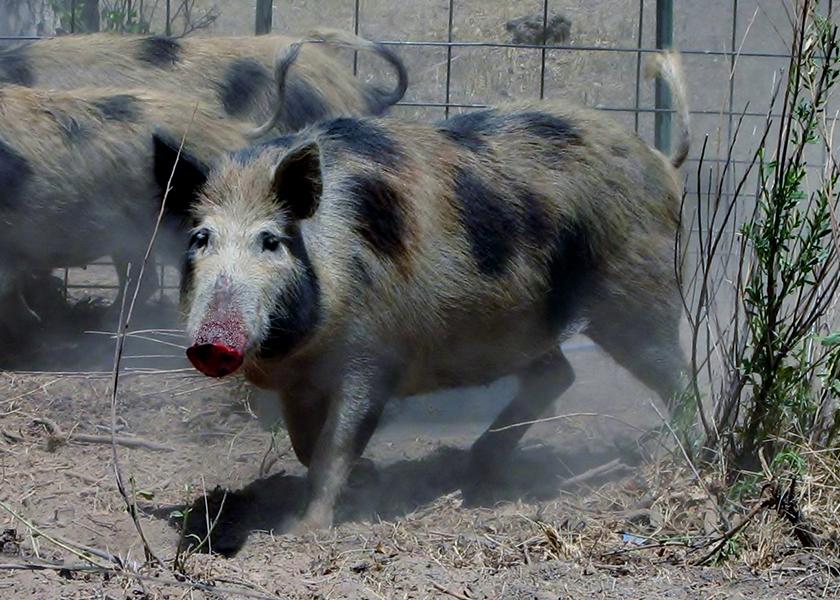
Protecting the U.S. Pork Industry from African Swine Fever Virus
Scientists at Texas A&M AgriLife Research are mobilizing to save your bacon.
A team of researchers led by experts from the Department of Entomology in the Texas A&M College of Agriculture and Life Sciences are utilizing emerging genetic technology to create a next-generation surveillance method to protect the U.S. pork industry from African swine fever virus, ASFV.
The four-year, $800,000 grant project is funded through the U.S. Department of Agriculture National Institute of Food and Agriculture.
Gabriel Hamer, Ph.D., professor in the Department of Entomology, is leading the team that includes, Pete Teel, Ph.D., AgriLife Research entomologist and Regents Professor, also in the department, and Job Lopez, Ph.D., associate professor from the Baylor College of Medicine, as well as scientists at the National Agricultural Research Organization and Makerere University, both in Uganda.
Hamer said the team’s goal is to advance tools that quantify contact between domestic swine and soft-bodied ticks that are known vectors of ASFV. The overarching mission of the project is to prevent ASFV from establishing itself in the U.S.
“The U.S. is the third largest consumer of pork products and represents 20% of global production, so this effort has enormous ramifications across the industry, individual producers and people shopping at grocery stores,” he said.
African swine fever virus too close for comfort
The emergence of ASFV in Africa, Europe and more recently Asia and the Caribbean demonstrates the threat of the virus’s spread. The virus causes significant illness and mortality in domestic swine, which could devastate the U.S. swine industry.
A 2018 outbreak of the virus in China resulted in the loss of millions of pigs due to mortality and culling with direct financial losses estimated at $10 billion. Loss of production capacity there led to higher pork prices in the U.S. as exports increased to fill Chinese pork demand.
ASFV reemerged in the Caribbean in 2021 after a 40-year absence. Its proximity to the U.S. put the pork industry, state and federal agencies on high alert and prioritized preparedness for disease prevention.
Questions about this Article?:

Copyright © 2021-2025. All rights reserved
This website stores cookies on your computer. These cookies are used to collect information about how you interact with our website and allow us to remember you. We use this information in order to improve and customize your browsing experience and for analytics and metrics about our visitors on this website. To find out more about the cookies we use, see ourPrivacy Policy.